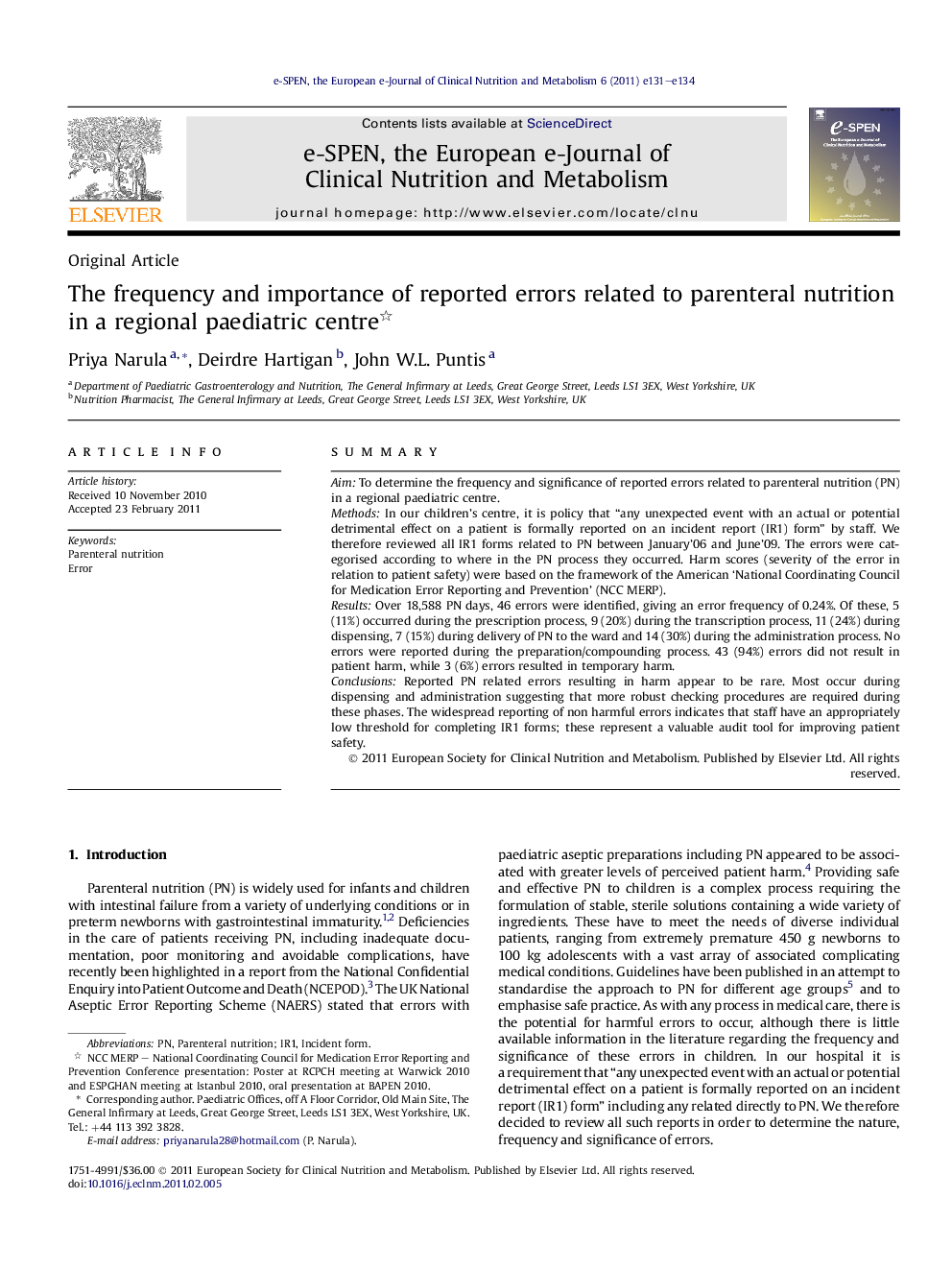| Article ID | Journal | Published Year | Pages | File Type |
|---|---|---|---|---|
| 2691089 | e-SPEN, the European e-Journal of Clinical Nutrition and Metabolism | 2011 | 4 Pages |
SummaryAimTo determine the frequency and significance of reported errors related to parenteral nutrition (PN) in a regional paediatric centre.MethodsIn our children’s centre, it is policy that “any unexpected event with an actual or potential detrimental effect on a patient is formally reported on an incident report (IR1) form” by staff. We therefore reviewed all IR1 forms related to PN between January’06 and June’09. The errors were categorised according to where in the PN process they occurred. Harm scores (severity of the error in relation to patient safety) were based on the framework of the American ‘National Coordinating Council for Medication Error Reporting and Prevention’ (NCC MERP).ResultsOver 18,588 PN days, 46 errors were identified, giving an error frequency of 0.24%. Of these, 5 (11%) occurred during the prescription process, 9 (20%) during the transcription process, 11 (24%) during dispensing, 7 (15%) during delivery of PN to the ward and 14 (30%) during the administration process. No errors were reported during the preparation/compounding process. 43 (94%) errors did not result in patient harm, while 3 (6%) errors resulted in temporary harm.ConclusionsReported PN related errors resulting in harm appear to be rare. Most occur during dispensing and administration suggesting that more robust checking procedures are required during these phases. The widespread reporting of non harmful errors indicates that staff have an appropriately low threshold for completing IR1 forms; these represent a valuable audit tool for improving patient safety.
